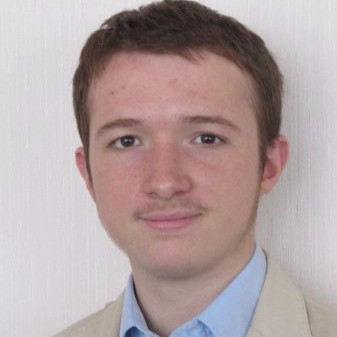The European Partnership for Energy and the Environment (EPEE) is the voice of the refrigeration, air-conditioning, and heat pump (RACHP) industry in Europe, representing 40-plus manufacturers and industry associations across 19 countries, with more than 30 billion Euro in turnover. EPEE members employ more than 200,000 people in Europe and create indirect employment through a vast network of small and medium-sized enterprises, such as contractors who install, service, and maintain our equipment.
EPEE is the leading RACHP trade association in Europe, focusing on three main policy areas: decarbonisation, sustainable products, and refrigerants. EPEE members are fully committed to EU carbon neutrality by 2050 and develop the products and technology that will deliver on decarbonising buildings and homes.
The F-Gas Regulation is an EU Regulation directly applicable in all EU Member States which aims to control emissions from fluorinated greenhouse gases (F-gases). The original F-gas Regulation was published in 2006 and was revised in 2014. The new F-gas Regulation (EU) 2024/573 replaces the (EU) 517/2014 regulation.
After starting the revision process of the (EU) 517/2014 in June 2020, the European Commission published a draft legislative proposal on 5 April 2022, with the objective to align the European F-gas Regulation with the European Green Deal targets, the European Climate Law, and the international obligations on HFCs under the Montreal Protocol. The F-gas Regulation (EU) 2024/573 was published on 20 February 2024 and entered into force on 11 March 2024.
EPEE was engaged throughout the revision process, supporting the ambition of the proposed Regulation whilst highlighting a number of areas of concern. In particular, EPEE warned that without careful planning and implementation, certain product bans would inadvertently affect the roll-out of heat pumps which are a critical part of Europe’s decarbonisation goals.
Innovation within the RACHP sector and the deployment of heat pumps have already led to a dramatic drop in emissions, and there is a huge opportunity to continue this trend.
The figure below illustrates an analysis of the impact of heat pumps, showing the direct HFC emissions and indirect energy-related emissions from the rapidly growing bank of heat pumps, together with the amount of CO2 emissions avoided through the use of these heat pumps.
The “prize” is the massive cut in fossil fuel emissions related to low temperature heating. In 2050, the “cost” in terms of heat pump emissions is more than 100 times smaller than this prize, even though EPEE modelling includes some continuing use of HFCs in new heat pumps.

EPEE’S FOCUS
Some of EPEE’s main concerns of the Regulation are relate to the safety exemption, training and certification, and labelling requirements.
Several exemptions are introduced (or maintained) in the F-gas Regulation. Some of these are time-unlimited and are directly applicable. Others are limited in time (up to four years) but can be requested several times, via a Member State’s request to the Commission.
For product bans, safety exemptions are possible if relevant safety requirements at the particular location do not permit the installation of equipment using fluorinated greenhouse gases or alternatives to fluorinated greenhouse gases below the GWP value specified in the respective prohibition (Annex IV).
Labelling requirements from the current F-gas Regulation (EU 517/2014) still apply until 31 December 2024. The new labelling requirements, which will directly impact product labels, will enter into force as of 1 January 2025. In addition, these labelling requirements are now extended to HFOs.
Relabelling will be necessary in certain cases due to the calculation of HFO and blend GWP values. While HFCs still use AR4 for GWP values, GWP values for HFOs and non-fluorinated gases are based on AR6.
For installers and technicians working on RACHP equipment, there are also responsibilities for complying with safety exemptions. The installer will need to be aware of bans and exemptions under the Revision in order to know what can and cannot be installed.
They will also advise and support the operator by establishing the evidence which enables a derogation from the product bans. There is still some clarification required on this point, which EPEE is investigating.
Installers and technicians must also meet new training and certification requirements, which have been extended to HFC-alternative refrigerants (fluorinated and non-fluorinated). F-gas certificates will require training on alternatives. Leak checks for mobile equipment shall be carried out by persons with training attestation.
The system for certification remains the same as under the previous Regulation but is extended. Member States must set up certification programmes in line with the Regulation requirements and set a deadline. There is mutual recognition of certificates between Member States. It is important to note that existing certificates and training attestations issued in accordance with Regulation (EU) No 517/2014 will remain valid, in accordance with the conditions under which they were originally issued.
The Commission has already issued a first draft of the implementing act establishing the minimum requirements for certification programmes and training attestations which will be ready before the end of 2024.
IMPLEMENTATION
To maintain a level playing field and meet the needs of the variety of application required throughout Europe, proper implementation is critical.
Examples for installers, manufacturers, producers.
Implementing Acts (IA) may have individual or general applications to harmonize the conditions for implementation. They are focused on the “how:” the practical implementation of rules as adopted. EPEE to date has provided focused feedback on three draft Implementing Acts:
- Extension of minimum requirements for certification or training attestations to perform certain activities for different types of equipment: This implementing act is mainly focused on providing European RACHP technicians a proper certification and training to handle refrigerants for the RACHP sector.
- New reporting format: The Commission’s Implementing Regulation (EU) No 1191/2014 has previously established the format for the report to be submitted by producers, importers, exporters, and certain users of fluorinated greenhouse gases.
Article 26 of the revised F-gas Regulation (EU) 2024/573 establishes new reporting obligations concerning producers, importers, exporters, and certain users of fluorinated greenhouse gases. In particular, the list of gases, equipment containing those gases and activities related to those gases has been extended.
- Update of format of Labelling: This implementing act, which focuses onthe format of the labels for certain products and equipment containing fluorinated greenhouse gases, enters into force on 1st January 2025.
For the first time, the label format draft implementing act explains that the label will need to:
- Include the indication that this product is “Prohibited to be installed and operated unless required by safety requirements that have to be applied at the site of operation”, and
- include an empty placeholder for products that can only be placed on the market in case of the exemption for safety requirements. This space will enable to indicate the specific reason for using the safety exemption at the site of installation.
EPEE MODELLING
In 2012, EPEE in cooperation with Gluckman Consulting created the HFC Outlook EU model, including country specific models to help Montreal Protocol Article 5 countries prepare their F-Gas reductions plans. The model was last updated in 2022 to include HFC consumption trajectories based on the latest technical developments, market growth forecasts for heat pumps, and modelling of the direct and indirect greenhouse gas emissions from RACHP systems.
EPEE intends to update the model to capture the anticipated changes that result from the F-gas Regulation revision. The modelling will be designed to show the change in emissions, phase down, and products placed on the market under the revised regulation.
For example, equipment pre-charged with HFCs can be placed on the market only if those substances are accounted in the quota system. Steeper phase down steps are introduced from 2025 onwards and are only applicable to virgin HFCs. The phase down is not applicable to recycled or reclaimed HFCs, nor is it applicable in any way to HFOs. The phase down becomes a phase out of virgin HFCs in 2050, but by 2040, the Commission is obliged to review and assess the feasibility of these last steps.
There is still a bank of quota authorisations, but these authorisations can only be used for import of pre-charged equipment and are not useful for equipment manufactured in the EU. In addition, a quota reserve for heat pumps is also foreseen to be enacted in case of verified shortage of heat pumps due to HFC price, heat pump growth, and deployment compared to REPowerEU targets.
It is also important to note that the previous F-gas Regulation excluded MDIs from the quota requirements, while the new one includes the MDI sector from 2025.

INDUSTRIES’ FUTURE KEY TOPICS OF ENGAGEMENT
EPEE has actively collaborated with EU policymakers to address and clarify industry’s concerns.
One of the primary topics of focus has been the Implementing Acts. The industry played a significant role in providing feedback on the public consultations, highlighting several issues within the Commission’s draft proposals.
Additionally, EPEE participated in explaining the revised F-gas Regulation to producers, manufacturers, and installers, clarifying the direct impact of the regulation on servicing bans and placing on the market bans.
Similarly, EPEE highlighted that installers must be equally aware of the bans and exemptions in view of understanding what equipment can or cannot be installed and to which exemptions can it be subjected.
EPEE has also developed a comprehensive guiding document which outlines specific instances and questions about where the Safety Exemption can be applied and what are its implications, ensuring that all stakeholders properly understand its usage and know how to navigate the application procedure.
Several points remain unclear within the revised F-gas Regulation, notably the future assessment reports scheduled for 2027, 2028, 2030, and 2040.
One of the most important ones will enable assessing the availability of alternative refrigerants and assess the feasibility of maintaining certain bans listed in Annex IV after 2030.
These provisions have created confusion and uncertainty within the RACHP industry, as the Commission’s approach to conducting these reviews remains unclear. This ambiguity continues to be of concern, as clarity on the process is essential for the future planning and for upcoming investments in the sector.
Further work needs to be undertaken to have a good understanding of the other possible exemptions including the Ecodesign exemption, the 4-year possible exemption from product bans or from HFC quota requirements.
CONCLUSION
EPEE is diligently following the many Implementing Acts as they are shared by the European Commission, to ensure proper and effective implementation of the Regulation in practice. The updated HFC Outlook EU Model will help industry prepare for the future of the sector.
The RACHP industry in Europe is committed to advancing sustainability for all. Heat pumps and other innovative heating and cooling equipment will help the EU achieve its emissions reduction goals while achieving energy independence. These products offer renewable energy technology for data centres, hospitals, and grocery stores, as well as homes and businesses, that people rely on each day.

Aya El Azhari

Vincent de Badereau
